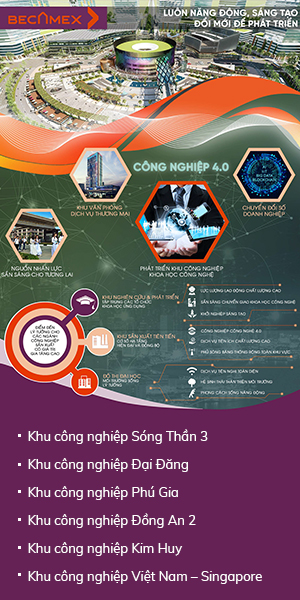Asia – Pacific developing countries will continue driving the global economy in 2011, however high food and fuel prices, and volatile capital inflows pose fresh challenges, the United Nations said in its annual regional social and economic report released on May 5th 2011.
Strong growth is projected at 7.3 per cent against last year’s 8.8 per cent pulling developing countries out of the “Great Recession” of 2008/09. Still, the 2011 regional growth outlook is subject to downside risks, notably from the return of high food and fuel prices, sluggish recovery in rich nations, a deluge of volatile capital inflows and the after-effects of natural disasters, although the regional economic impact of Japan’s recent earthquake and tsunami will be less severe than might have been initially expected, notes the UN Economic and Social Commission for Asia and the Pacific (ESCAP) flagship publication, the Economic and Social Survey of Asia and the Pacific 2011.

“The Asia – Pacific region emerged from the global financial crisis as a growth driver and anchor of stability of the global economy,” said UN Under Secretary General and Executive Secretary of ESCAP Dr. Noeleen Heyzer.
“It now has the historic opportunity to rebalance its economic structure in favour of itself to sustain its dynamism with strengthened connectivity and balanced regional development and make the twenty-first century a truly Asia – Pacific century,” she added.
Along with moderate slowdown in growth in 2011, most economies are likely to see an increase in inflation from rising food and oil prices. “The key immediate challenge is to address rising food prices that are threatening to seriously undermine the process of poverty reduction,” said Dr. Heyzer.
ESCAP estimates show that rising food and oil prices could lead to 42 million additional people in poverty, joining the 19 million already affected in 2010. In a worst-case scenario with food price inflation doubling in 2011 and average oil prices at 130 USD per barrel, the achievement of the Millennium Development Goal (MDG) for poverty could be postponed by up to half a decade in some developing countries in the region.
ESCAP estimates that persistent high oil prices may lead to economies experiencing a negative impact on GDP growth in 2011 of up to 1 per cent. The impact of oil prices on growth in Asia – Pacific is significant due to high energy intensity of production in the region.
The report urges the G20 group of nations, as a major forum for global policy coordination on economic issues, to act decisively to moderate the volatility of oil ad food prices. This could include G20 regulating commodity markets to reduce speculation, as well as discipline the conversion of food into biofuels.
The survey also recommends that the G20, as a group of all major oil consumers, should negotiate a benchmark “fair” price of oil with the Organization of Petroleum Exporting Countries (OPEC) and seek agreement to restrict price movements to a band around it.
ESCAP urges protecting poor and vulnerable households through strengthening of public food distribution system, food vouchers, school feeding programmes and other targeted subsides. Government need to moderate prices through tariffs and tax policies, regulation of boarding and speculative activity, and the countercyclical use of buffet stocks.
Above all, the report notes, priority must be given to a supply response through enhanced public support for agriculture to foster a new knowledge-intensive and environmentally resilient green revolution.
Another, the Survey finds, is volatile and large capital flows creating asset bubbles in many economies of the region and causing currencies to rise. Government have built up foreign exchange reserves as insurance against such capital flows but these may be inadequate in some cases, according to the ESCAP financial vulnerability indicator.
Hence, capital controls should be seen as an important element in the policy tool kit for reducing the volatility of inflows. In the medium-term, the region must also generate more aggregate consumption and investment demand to sustain dynamism and reduce poverty.
Exploiting the potential of regional economic integrate for sustaining dynamism
With over 950 million people living on less than 1.25 USD a day, countries in the region must strive to expand consumption by improving quality job opportunities, expanding social security programmes and promoting agriculture and rural development. Bridging the region’s huge infrastructure gaps using its equally huge savings can boost jobs and incomes.
While rapid growth in large economies such a China and India should benefit smaller neighbours, this cannot be taken for granted. “The rising tide of development opportunities will not lift all boats if these are separated by water locks,” said Dr. Heyzer.
The 2011 Survey shows the benefits of intraregional trade have not been fully exploited due to high trade costs and other barriers with ESCAP estimates suggesting the complementarities between the subregions are greater than those within the subregions.
Hence, regional integration should focus not just on deeping integration within subregions, but also on fostering trade links across subregions. The region is actively trying to exploit opportunities for regional economic integration as evident by the rising share of intraregional trade and foreign direct investment (FDI) flows and numerous preferential trading arrangements (PTAs).
While these agreements are bilateral or subregional and do not create a seamless, broader and unified Asia – Pacific market, they can be stepping stones towards that goal. Greater connectivity in transport links, ICT, energy and financial cooperation are other areas where the region can benefit from integration.
The least developed countries (LDCs) in the region have remained marginal exporters, of manufactured goods over the past 40 years and have not benefited from the dynamism of the region through greater connectivity and regional integration due to lack of productive capacity. However, LDCs must not focus simply on producing more of the same goods and services, but need to expand the range and complexity of the goods they produce.
A pragmatic strategy to build productive capacities in LDCs is to let these be generated or acquired as part of the process of strategic diversification through the combined efforts of the ‘development’ State and the private sector, supported by development partners.
Besides, enhancing the quality and magnitude of FDI, official development assistance (ODA), market access and technical assistance provided by developed countries, South – South and triangular cooperation can play an important role in this process.
(Source: vietbao.vn)
(CPV)


























